How to tell if a goat is pregnant: If you’ve decided to breed your goats, you’ll undoubtedly be curious to observe how they’re doing after the initial mating to determine whether or not they are actually pregnant.Since a goat’s gestation period, on average, lasts 150 days from conception to birth, you won’t have to wait that long to find out whether you will have a few new babies to care for.
Every pregnant goat exhibits a few physical characteristics. Being skilled at spotting goat pregnancy requires time and practice, but it’s a skill that pays off.Your goat will display a variety of physical signs of pregnancy, ranging from subtle ones like udder shape changes to more overt ones like a lack of heat. Below are the signs tell if a goat is pregnant.
Also see: How To Overcome Fear Of Failure: 10 Proven Strategies
Top 10 Signs To Know If A Goat Is Pregnant
1.Failure to return to heat: Absence of going into heat is one of the easiest ways to tell if your goat is pregnant. An unsuccessfully bred goat usually goes into heat again on her subsequent cycle. Knowing how long each doe’s heat cycle is will help you anticipate when she will go into estrus again.
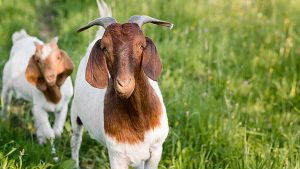
A doe’s heat cycle can last anywhere from 17 days to about 25 days. A doe that becomes pregnant won’t have a regular heat cycle again. On the following cycle or two, she might exhibit some estrus symptoms, but not to the same degree as usual and when she merely visits a buck, she won’t show much interest in him.These are primarily signs of absence of heat that indicate a goat is pregnant. Although this is undoubtedly one of the clearest signs of pregnancy, using this technique can be difficult if you have a doe who generally goes into silent heat.
2.Increased Appetite and decrease in milk production: The appetite of a pregnant doe increases throughout the pregnancy. Since there is little fetal development during the first 100 days of early-to-mid gestation, goats only have slightly higher nutritional and energy requirements.
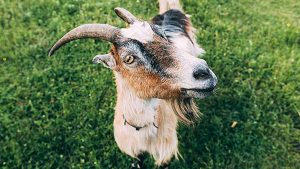
These increase as the gestational period lengthens. Additionally, if she is being milked, her milk production may gradually decrease as her udder gets smaller. Stop milking a milker two months prior to the due date of the children to give her body a break if she doesn’t stop producing on her own.
3.The doe’s personality changes: Hormonal changes in goats can have a huge impact on their personalities, just like they do in people. A personality change frequently occurs in pregnant does, usually within two weeks. For instance, a doe who is generally nice to you can start acting distant.

If she was shy and flighty before, you might find her approaching you with confidence for a snack. Similarly, a doe that is usually gentle and charming could turn pushy or hostile. These changes are normal and reflect her higher pregnant hormone levels.
Also see: Advantages and Disadvantages of Parliamentary System of Government
4.The doe’s belly Will Change Shape and tightens: Most goats have barrel-shaped midsections, but as a doe gets farther along in her pregnancy, her tummy will start to stand out more and more. Her tummy will also tighten, which is another sign of pregnancy in addition to the size shift.
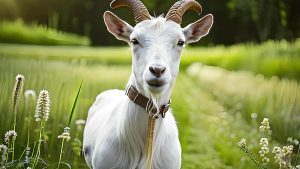
A non-pregnant goat’s belly will likely feel soft and mushy when you press into it. On the other side, a settled doe should have a harder belly if you press on it at least 2-4 weeks after mating. It should be noted that a doe who is not accustomed to handling may tighten her tummy out of fear even if she is not pregnant.
5.Pregnant Goat’s Udders Will Swell: The females of dairy animals and ruminants like cattle, goats, and sheep have an organ called an udder that is made up of two or four mammary glands. In primates and elephantine pachyderms, an udder is the equivalence of the breast.
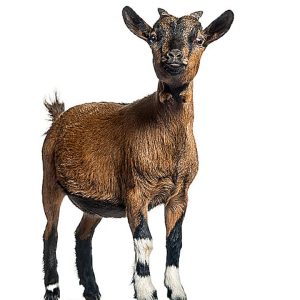
A doe’s udders will start to swell as her pregnancy continues in order to start producing milk for her unborn calves. Although a bulging udder is a common symptom of pregnancy in goats, the timing can vary widely between individuals, making it less accurate as a gauge of the doe’s stage of pregnancy. A swelling udder, however, might be used as proof of pregnancy if you think your doe might be pregnant.
6.You might be able to feel a pregnant doe’s kids.: You should be able to palpate the baby’s movement at about the 4-month mark of pregnancy.
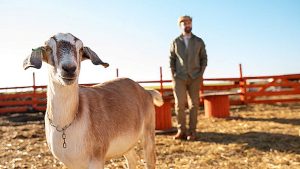
If you wish to do this, push your hands firmly against your doe’s tummy. You might sense the peculiar shape of the baby goats or even their inside movement. By now, you’ve probably also become aware of other pregnant symptoms including a swollen udder and a bigger, firm tummy.
Also see: Richest Companies In The World And Their Market Cap 2023: Top 14
7.Check the Tail Ligaments: To determine whether your deo is pregnant, it is very worthwhile to check the ligaments surrounding the tail.

If your doe is pregnant, you will feel two straight, pencil-like objects when you gently pinch either side of the tail base. These vanish about 24 hours before a nanny goat gives birth. It’s a solid sign the baby or infants are on the way.
8.The doe snores loudly and frequently.: Listening for snoring is another method to determine if a doe is pregnant. Every goat snores once in a while when they are sleeping, especially during a hot summer day when they are napping.

But during pregnancy, goats snore more loudly and frequently. Walking up to a goat farm and hearing a chorus of snorting pregnant does is the funniest thing ever. Be careful that this is not a precise method for determining goat pregnancy.
9.The doe’s overall shape changes.; Sometimes a goat’s general appearance can tell us whether or not it is pregnant.The food digestion organs on the left flanks of goats are called rumens. If your goat ate something different or was experiencing gastrointestinal problems, their rumens may occasionally get larger.

You should pay attention to the right side because that is where a goat will carry its young. The doe may have a longer right side than left side as her fetus(es) grows. A full rumen is indicated by swelling on the left side, but when a doe is carrying two or more young, they may press into the rumen and cause her to bulge out on both the left and right, giving the doe a boat-like look.
Also see: Effects of the Nigerian Civil War: Positive & Negative Impact
10.You can go for a Goat Pregnancy Tests: Lasty, You can conduct a goat pregnancy test if you want a more precise method of detecting the state of your doe. These comprise ultrasounds, blood tests, and urine tests. If you are unsure whether your doe is pregnant or not, you can run a blood or urine test.
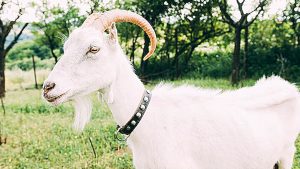
You can Perform this type of test after 40 to 50 days of gestation period. You might not get a reliable result with an early pregnancy test. Call a veterinarian for a quicker and more reliable result. After 60 days of gestation, an ultrasound can be done on your doe to confirm pregnancy. Ultrasounds are another technique that is frequently used to identify pregnancies.
Conclusion
You must be aware if your doe is pregnant in order to make sure her requirements are met and to prepare for kidding. Pregnant goats require high-quality fodder, and later in the pregnancy, extra supplements amongst other needs. Additionally, you must make sure they are in a calm atmosphere. When you have pregnant does, it is not a good idea to introduce new herd members, change to a different feed, or move pastures. Although goats are normally healthy from birth, pregnant ones still require special attention.